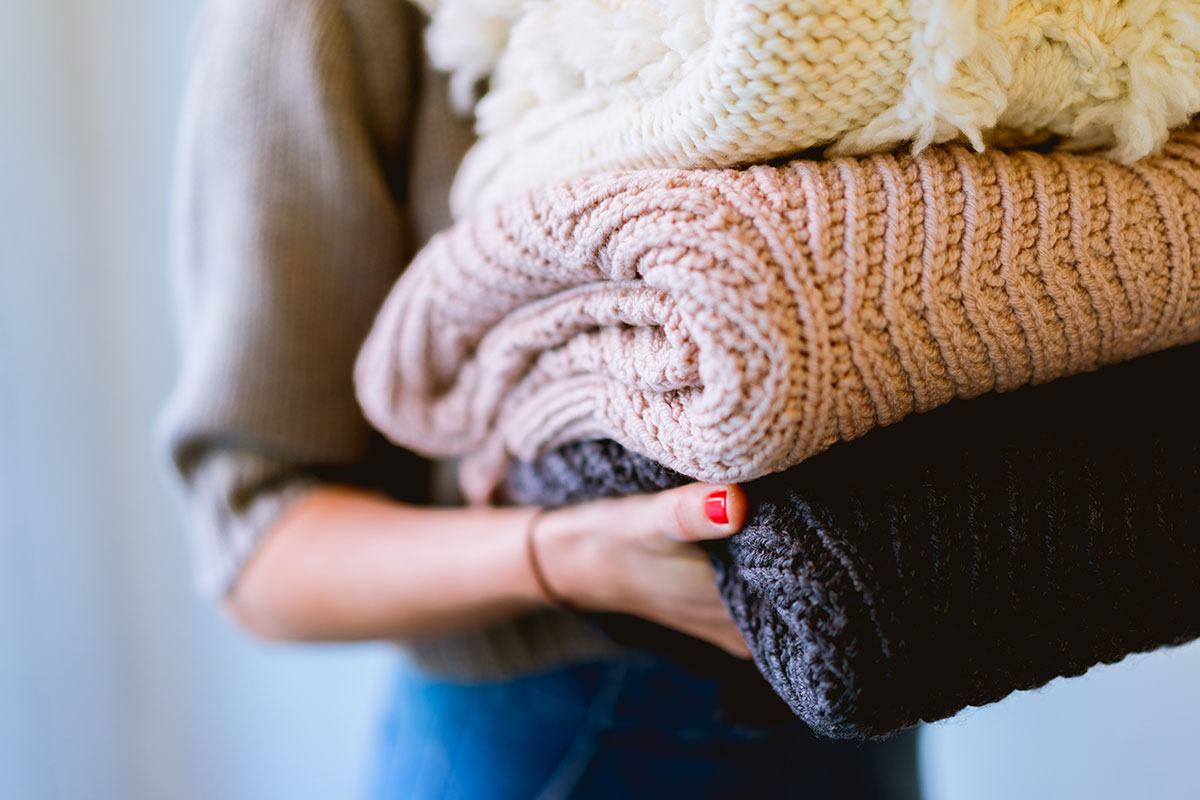Photo by Dan Gold on Unsplash.
When washing our clothes, in addition to classifying them by color, garments, and fabrics, we must also check the symbols on their labels in order to verify the best way of cleaning and drying to maintain the textile quality of the garment. In the washing symbols, we will find machine washing with maximum temperature, hand washing, and dry cleaning. Surely, when you see the dry cleaning symbol you will have taken your clothes to a dry cleaner, but do you know what are the ingredients they use when cleaning the garment?
What is dry cleaning?
In the dry cleaning process, most dry cleaners use the chemical perchloroethylene (PERC) as a solvent instead of water. The term “dry” doesn’t mean that the garment never gets wet but that it should not get wet with water. The clothes are washed in this solvent and then during the recovery process, it is reused because direct evaporation in the air causes pollution. Yes, you read that right, pollution.
PERC is a synthetic volatile organic compound (VOC) and it can present serious health risks and a threat to the environment, contaminating drinking water and air. The Occupational Safety and Health Administration (OSHA) mentions that PERC is a potential human carcinogen, and the Symptoms associated with exposure include: depression of the central nervous system; damage to the liver and kidneys; impaired memory; confusion; dizziness; headache; drowsiness; and eye, nose, and throat irritation. Repeated dermal exposure may result in dermatitis. It is likely that we are exposed to PERC when bringing clothes home after dry cleaning, since this substance can remain in the clothes and evaporate in the home air, especially in the area where we store the clothes, according to The Environmental Working Group (EWG).
The eco-friendly dry cleaning option: Professional Wet Cleaning (PWC) and CO2
Fortunately, there are alternatives for the dry cleaning of our garments, which are not toxic and are as effective as those used by PERC. The safest alternative is professional wet cleaning (PWC). In this process, biodegradable detergents and actual water are used in specialized computer-controlled machines with gentle wash cycles, and with the level of water, temperature, and drying times programmed for each type of fabric. The term “dry cleaning” was traditionally used on fabrics made out of silk and wool fibers, so almost all the garments that have a dry cleaning label can be cleaned using this innovative wet method and equipment—including all other regularly laundered items.
One of them is cleaning with liquid carbon dioxide, pressurized liquid CO2 is used instead of PERC, in combination with other cleaning agents. CO2 is a non-flammable, non-toxic, colorless, tasteless and odorless natural gas that, when subjected to pressure, becomes a liquid solvent and occurs naturally in the environment. Liquid CO2 dissolves dirt, fats, and oils in clothing, it’s reusable and can be released into the air without producing new CO2 and thus does not contribute to global warming.
There are other alternatives but are better avoided, such as cleaning with hydrocarbons, in this method a petroleum-based solvent and a mixture of different chemicals are used, which are not green and have a health risk. Another alternative is Siloxane D5 or GreenEarth, a method that uses a silicone-based solvent and decomposes into sand, water, and carbon dioxide. However, the manufacture of siloxane uses chlorine, releases carcinogenic dioxin during the manufacturing process. A huge risk for workers in the industry.
This is why when we have clothes with the dry cleaning symbol, we must first ask what methods and what solvents are used at our local laundromat for dry cleaning. Let’s avoid services that use perchloroethylene under any of their names (PERC, PCE, tetrachloroethylene), siloxane and / or hydrocarbon solvents.
Dry cleaners in Dallas, TX that use the Eco-Friendly PWC dry cleaning methods:
Green Life Organic Cleaners
Green Life Organic Cleaners uses the wet cleaning method and its owner has been involved in the development of its machinery and cleaning techniques with this method. He has two locations, one in Uptown Dallas, and has been in Frisco for more than a decade—during his operation he has taken into account the importance of a healthier and greener lifestyle by using city water and non-toxic detergents.
More info: https://greenlife-cleaners.com/
Laundry Butlers
Laundry Butlers uses a biodegradable, odorless, organic and non-toxic solvent for their Wet Cleaning Method. For them, the most important thing is clothing care, environmental responsibility, and recycling. It was founded by a woman named Micaella, who decided not to use toxic chemicals for dry cleaning because they were contributing to the deterioration of her husband’s health. The method they use is wet cleaning and is a Green America Certified Business.
More info: www.laundrybutlers.com
J’s Tailor & Cleaners
J’s Tailor & Cleaners has more than 40 years of experience in the business, and in addition to offering the wet cleaning service, they also offer tailoring and custom modifications to your garments. They have four locations at Oak Lawn, Sherry Lane, Park Lane, and High Market Street.
More info: https://jstailorandcleaners.com/
